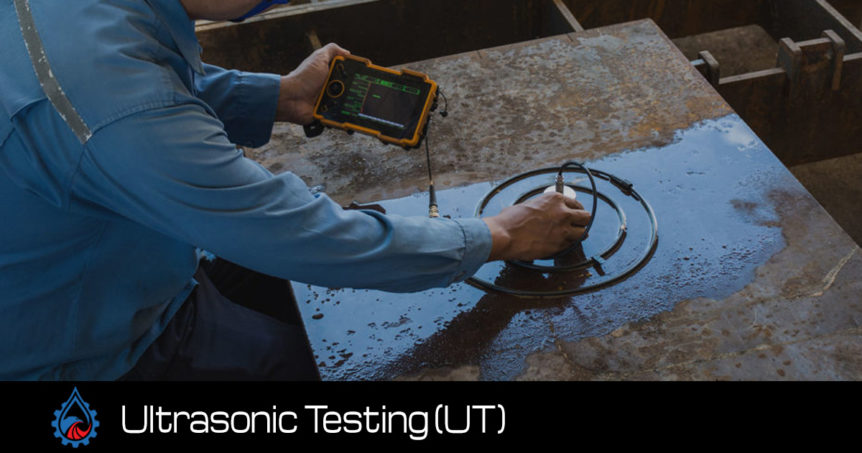Ultrasonic Testing (UT)
Ultrasonic Testing (UT) is a method of using short, high-frequency ultrasonic sound waves to identify flaws in a component. Our highly trained and experienced technicians will then measure these waves to determine and identify any problems. UT is also used for dimensional measurements, thickness and material characterization.
The advantage of UT is that it is incredibly accurate and can scan on and underneath the surface. Not only is UT sensitive to surface and subsurface issues, its depth of penetration for measurement and detection is superior to other NDT processes.
Ultrasonic Testing is also nondestructive. Test pieces don’t have to be sectioned, cut or exposed to chemicals. UT doesn’t pose potential health hazards associated with processes like radiography. The results are reliable, and highly repeatable.
Ultrasonic Thickness Testing (UTT)
Ultrasonic Thickness Testing (UTT) works with an ultrasonic gauge that measures how long it takes for a sound pulse to travel through a test piece then return to the inside surface or far wall. The sound pulse is conducted by an ultrasonic transducer. The measurement of thickness is calculated and then displayed on a digital monitor.
Ultrasonic Thickness Testing is performed on a wide variety of structures, including piping and pressure vessels. It’s widely used in the oil and gas industry, where erosion and corrosion can damage components. Performing UTT can help to determine how much metal has been lost, if repair or replacement work is needed, or if a structure needs to be retired.
Shear Wave UT
Phased Array Ultrasonic Testing (PAUT)
Phased Array Ultrasonic Testing (PAUT) is an advanced non-destructive technique that uses a set of ultrasonic-testing (UT) probes made up of numerous smaller elements which are individually pulsed with computer-calculated timing. PAUT is used to inspect complex-shaped components that are more difficult to check with a single probe. This method detects discontinuities such as cracks and flaws, and can also determine the component’s material quality.
PAUT has many advantages compared to traditional UT methods: Phased Array UT can be conducted within seconds, and additional scans can be performed easily because the emitting beams provide a high degree of repeatability. The beams also help create detailed and accurate cross sections of a component.
Corrosion Mapping / C-Scan Inspection
Corrosion Mapping is an ultrasonic technique to determine thickness, testing for deterioration of a metallic material by chemical or electrochemical issues.
Different kinds of corrosion include:
- Inter-granular: grows along grain boundaries
- Uniform: extends evenly across the surface
- Pitting: uneven and has smaller deep areas
- Exfoliation: moves along layers of elongated grains
Corrosion Mapping is widely used in the oil and gas industries for the inspection of pipework, pressure vessels, storage tanks, and reactors. In the aerospace sector, corrosion mapping is referred to as a “C-scan” for the inspection of composite materials.

